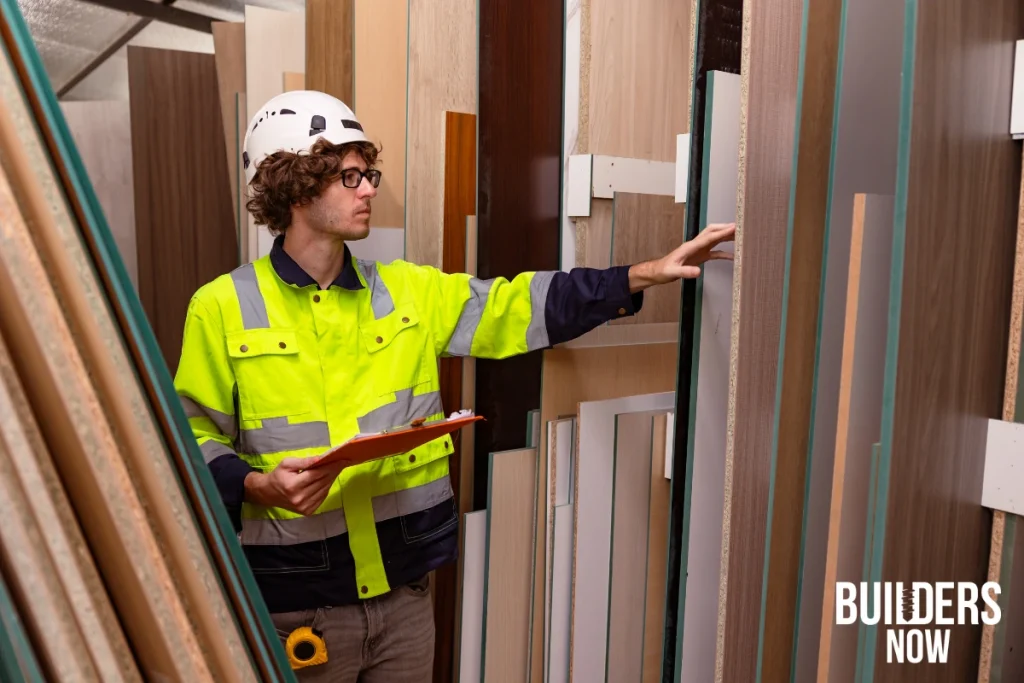Summary
New to flipping or house hacking? Learn how pros evaluate fixer-upper homes in California—layout, lot, and rough renovation costs—so you can spot potential where others see problems.
When it comes to building or fixing up a home, cheap materials often end up costing more later. We see it all the time. A faucet leaks after a year. A floor buckles after two. The savings you thought you made? Gone in repairs, lost rent days, and stress.
Contractors notice two kinds of projects: the ones built to last, and the ones we’re called in to fix.
This blog is about the stuff that holds up. You’ll learn how smart material choices save money over time, not just during construction, but in years 2, 3, and even 10. We’ll break down real examples and simple logic that can help you build smarter.
The Cost-Per-Use Mindset

Before picking a material, contractors ask: How often will this be used, touched, or cleaned? If something gets daily use, like a faucet or floor, it needs to hold up. Think about a computer mouse. A $6 one might last a few months. A $100 one works for years. Over time, the better one costs less.
Same with a garbage disposal. A $90 model might jam or fall apart in a year. The $300 one? It runs quietly and lasts longer. Now imagine that across five rental units. The better one saves money in the short term, but you’ll pay more in plumber service calls.
This is cost-per-use thinking. At Builders Now, we choose materials like they’ll get used 10,000 times, because they will.
Live-In vs. Rental Finish Decisions
Not all projects need high-end materials. But cutting corners in the wrong places often leads to regret, especially in rentals.
Contractors think in layers. What gets cleaned every week? What breaks after five turns instead of fifty? What leads to expensive callbacks?
Let’s break it down:
Live-In Homes: Spend on Daily Use, Skip the Trendy Stuff
If you’re living in it, focus on comfort and durability. Copper pipes, engineered wood floors, and solid cabinet boxes hold up for decades. Avoid cheap trim or components that tend to fail early.
Remodeled homes on Zillow get 26% more daily saves and 30% more daily shares than similar homes without upgrades. That tells you people notice quality, even before stepping inside.
Rental Properties: Choose Materials That Take a Beating
For rentals pickdurablematerials. LVP, composite counters, and mid-grade faucets are smart choices. You don’t need designer finishes, just things that last.
Skip fragile fixtures, gimmicks, or shiny finishes that show every smudge. They break, confuse tenants, and cost you more in repairs.
Bad materials cost money in lost rent, bad reviews, and repeat work. Build it to hold up.
How Quality Saves You Money Over Time

Materials don’t just cost money once. They cost money every time they break, get replaced, or take a rental offline. That’s why contractors look beyond the price tag and think in terms of total value over time.
Here’s a simple way to think about it:
| Material | Low-Cost Option | Better Option | Replacement Cycle | Lost Rent Days |
|---|---|---|---|---|
| Faucet | $45 | $125 | 1.5 years vs. 6 years | 3+ days vs. 0 |
| LVP Flooring | $1.20/sq ft | $3/sq ft | 5+ years vs. 12+ years | 2 days vs. 0 |
| Roof Shingle | $200/square | $500/square | 10 yrs vs. 25 yrs | 4+ days vs. 0 |
The cheaper options might seem like a deal, but they usually cost you more in the long run. Add up labor, downtime, tenant complaints, and rework, and the savings disappear.
Fixer-upper homes sell for 7.3% less than similar properties, the biggest discount in years. That means investors are stepping into repairs from day one. But smart material choices after purchase can keep the home from becoming a money pit later.
Avoid the Gimmick and What to Focus On
Some upgrades look smart at first. But ask any contractor, and we’ll tell you that too much tech can be trouble.
Motion-sensor faucets. Smart toilets. These all sound fancy, but in real life, they break more often than you’d think. And when they do, they’re expensive to fix or replace.
That’s especially true in rental properties, where lots of people use them and no one takes care of them like an owner would.
Even “low-maintenance” things like artificial turf can cause problems. Turf can trap heat, mess with drainage and require cleaning. It may not need mowing, but it still needs maintenance.
If you want a house to last, focus on three things:
- Simple parts that are easy to find at hardware stores
- Manual controls that don’t depend on electricity or apps
- Good installs from people who know what they’re doing
Mini Material Guide: Real vs. Fake

Every material choice you make in a home affects your wallet later. Some look good up front but fall apart fast. Others cost more at the start but help you save money, time, and stress for years.
Here’s how to make material decisions that hold up long after move-in day.
Pipes: Copper or Pro-Installed PEX vs. DIY PEX
Copper pipes are durable and reliable. They last for decades and rarely fail when installed properly. PEX is also a good choice, flexible and easier to install during remodels, but only if it’s done professionally with the right fittings and connections.
Problems usually come from DIY jobs. When people mix different piping types or use low-quality parts, leaks can form inside walls or under floors without being noticed right away. These leaks lead to mold, damaged cabinets, or warped flooring.
And those kinds of repairs are far more expensive than just using good materials from the start. If you’re updating plumbing, a consistent, professionally installed system is the safer bet.
Closing Rally: Ask Yourself, What Upgrade Do You Never Skimp On?
It’s easy to get caught up in surface-level choices, especially when trends or tight budgets come into play. But after the paint dries and the keys change hands, the materials underneath often decide how much you spend in the long run.
Smart material choices come down to three questions: How often will it be used? How long will it last? And what happens when it breaks?
As Benjamin Franklin once said, “The bitterness of poor quality lingers long after the sweetness of low price is forgotten.” That lesson becomes painfully clear when a rushed or budget-driven decision leads to costly repairs—or worse, a full redo.
So ask yourself: what’s one material or system you’ll never cut corners on again? Perhaps it’s a plumbing issue, as one leak can cause significant damage to everything around it. Maybe it’s flooring, because you’ve learned how quickly cheap laminate falls apart.
Or perhaps it’s trim or tile, because those small details shape how a space feels. Pick your non-negotiable, and let that decision guide the rest.
Build Smarter, Not Just Cheaper
If you’re planning a remodel or ADU, every material choice matters. Builders Now helps homeowners and investors get it right the first time. We spec smart, long-lasting options that reduce future headaches and protect your budget over time.
For investors: Explore our Home Remodeling & ADU Services; we’ll help you make choices that hold up and keep cash flow steady.
You might also be interested in
- How to Read a Fixer-Upper Like a Contractor and See the Profit Others Miss
- Spot Red Flags and Green Lights in a Fixer-Upper
Frequently Asked Questions
What is quality control of construction materials?
Quality control means checking materials before and during a project to make sure they’re safe, strong, and built to last. Contractors often follow guides or manuals to inspect things like wood, pipes, and roofing. At Builders Now, we use real-world standards so your materials hold up for years.
What is MPQP?
MPQP stands for Material Process Quality Program. It’s a system used to track how materials are made and tested before they get used on a job. While homeowners don’t need to know the technical side, the idea is simple: better materials come from better processes. That’s why we trust proven suppliers who meet clear quality standards.

